There’s a striking fact about energy consumption in Thailand that illustrates the country’s consumerist dilemma: the MBK shopping center in Bangkok, a hotspot for mass tourism, uses more electricity than the entire provincial capital of Mae Hong Son, a place that is often overlooked.
This grotesque contrast not only highlights the wasteful absurdity of maintaining a concrete behemoth at sub-20°C temperatures in the tropics but also reveals that there are still places in Thailand untouched by the frenzy of modern progress. One such place is Mae Hong Son, a tranquil corner far removed from consumerism and haste, and this guide aims to encourage you to visit it.
Is this region, with its charming provincial capital of just 7,000 residents, worth exploring? Absolutely, if you enjoy peace, nature, temples, and a break from mass tourism.
Mae Hong Son province feels frozen in time, even isolated within its vast landscape. There are no McDonald’s, KFCs, or other international franchises, and certainly no shopping malls. What the province does have, however, is spectacular natural beauty, numerous temples, and scenic parks inhabited by friendly locals who remain largely untouched by tourism.
To give you a sense of Mae Hong Son, it’s the least populated province in Thailand, but one of the largest in area. Adding to its remoteness, it borders Burma and is connected to the rest of the country by a notoriously winding road.
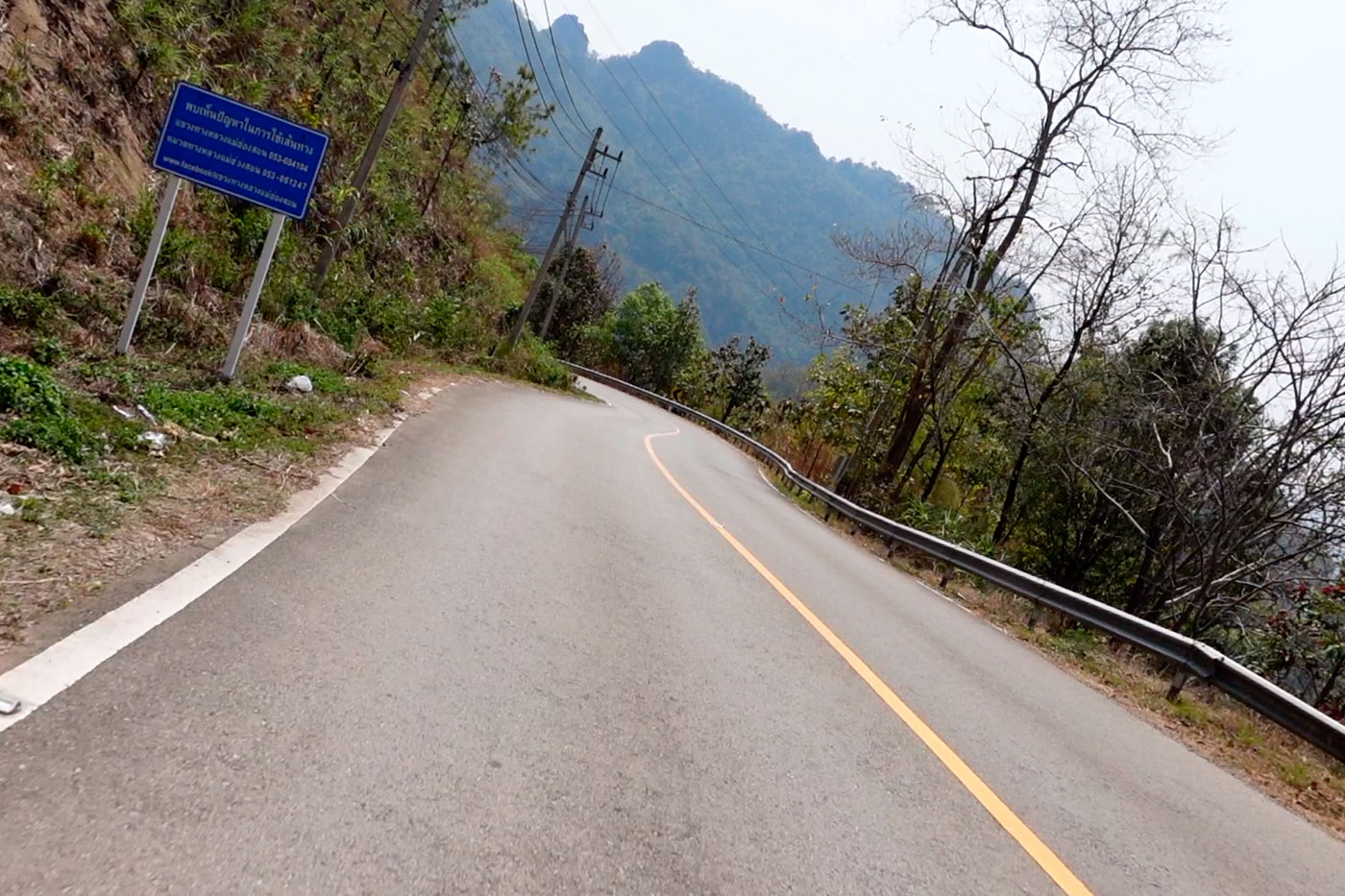
Historically, tourists came to see the “giraffe women” in artificial villages, an attraction rooted in controversial tourism. These women were forced to wear neck rings that stretched their necks in a way that was neither healthy nor traditional. Thankfully, these practices are no longer promoted, and as a result, organized tours to the area have largely disappeared, a welcome change.
Today, Mae Hong Son is a perfect destination to learn about the Karen ethnic groups, a stateless community living along the border with Burma. It’s one of the most peaceful and picturesque areas in all of Thailand.
You can visit Mae Hong Son province and its capital at any time of year, though some months offer a more pleasant experience. It’s also advisable to avoid the period of stubble burning.
To begin with, we always recommend getting good travel insurance Thailand. This can save you a significant amount on medical expenses and, most importantly, ensures that the insurance covers the costs upfront, so you don’t have to pay out of pocket.
In the previous article, we go into more detail about healthcare in Thailand, as well as tips on how to get the best insurance (and save money).
Nowadays, finding hotels, guesthouses, or restaurants in Thailand with free Wi-Fi is pretty common. However, there are still those who prefer (or need) to stay connected at all times.
That’s why we’ll show you how to get an eSIM Thailand card with internet— now also available with unlimited data.
Reaching the city of Mae Hong Son is one of the most challenging journeys in Thailand. By land, the only route is the infamous Highway 1095, renowned for having the most curves in the country. This mountain road is popular among cycling enthusiasts but presents significant difficulties, making it an exhilarating route for bikers who enjoy curvy, mountainous terrain.
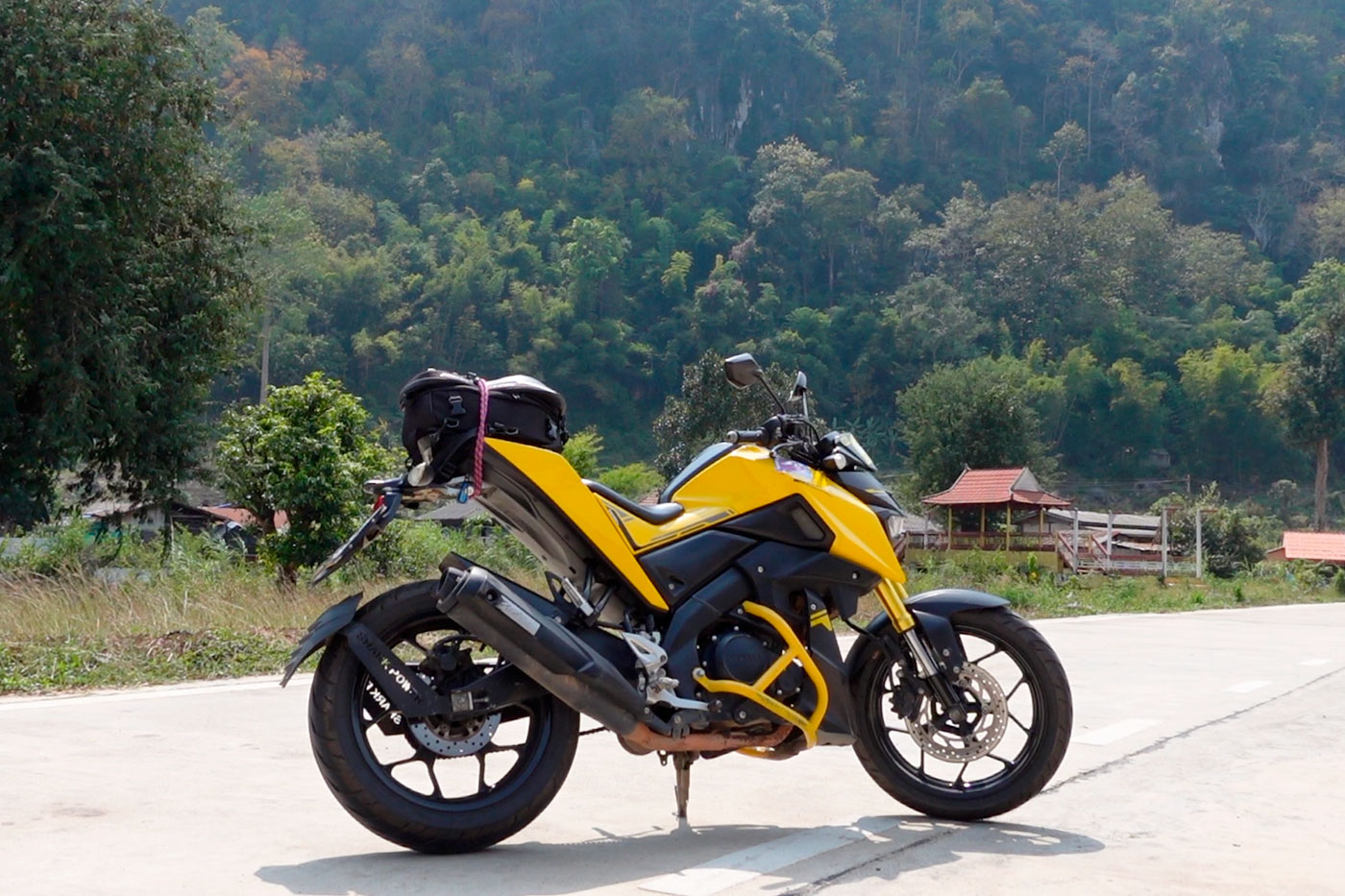
If you’re one of those bikers who thrive on challenging rides, here’s a detailed guide on how to tackle the Mae Hong Son motorcycle route, perhaps the most sought-after in the country.
Mae Hong Son’s airport is small, and the only airline that regularly flew there has discontinued its service. Currently, Bangkok Airways is the only airline offering flights to Mae Hong Son, with routes departing from Lampang. However, tickets are expensive, and flights are not available daily.
The most common way to reach Mae Hong Son is by road via Highway 1095, with the most convenient starting point being Chiang Mai.
Unfortunately, the typical route from Chiang Mai to Mae Hong Son passes through Pai, which stretches the journey to nearly eight hours. An alternative route through Mae Sariang covers the same distance.
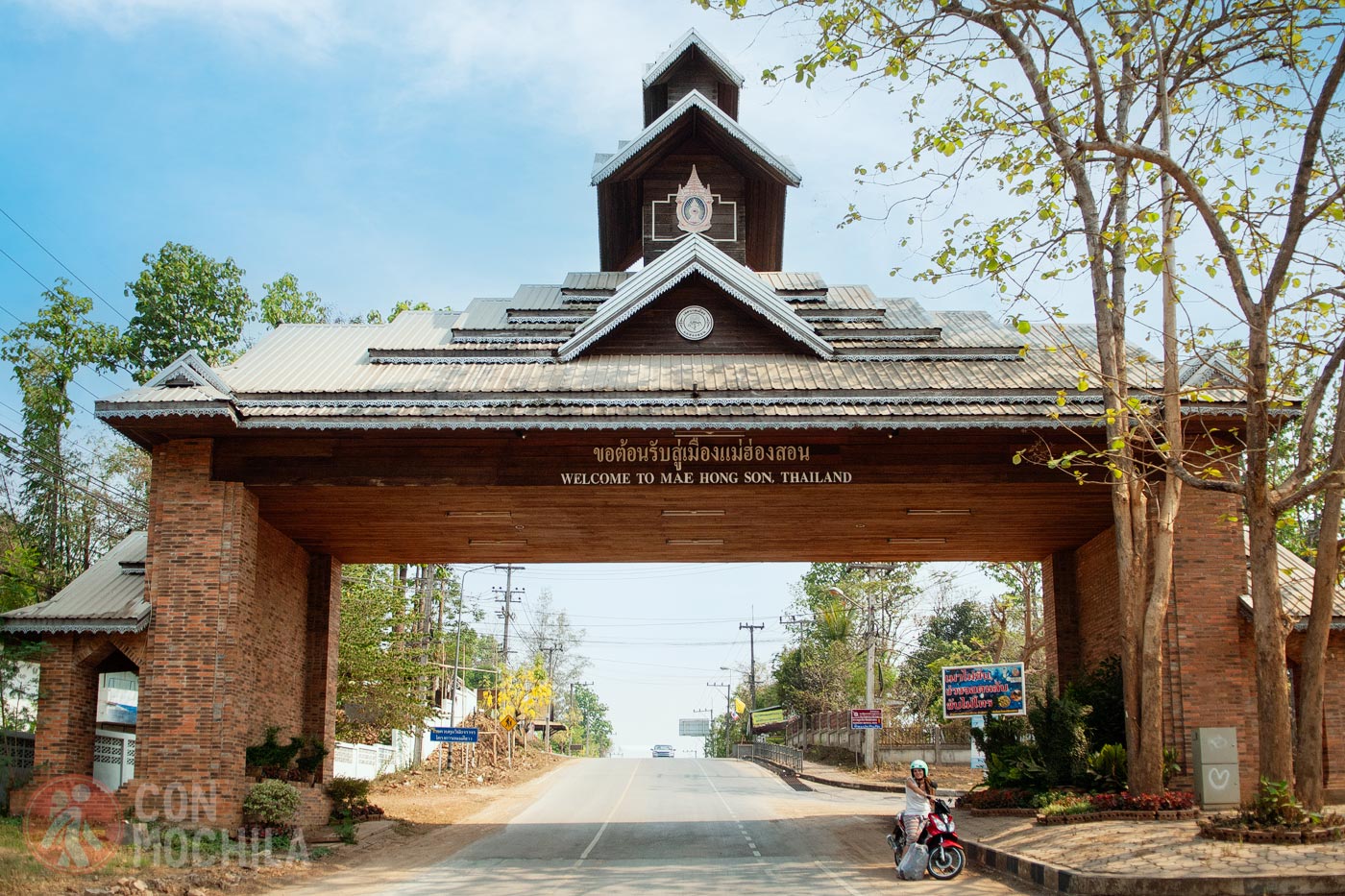
To make this trip, head to Arcade 2 station in Chiang Mai, where vans depart daily between 8:30 AM and 2:30 PM for the northwest province. Tickets are available through 12GoAsia for around $10.
Sometimes, the best plan in Mae Hong Son is to embrace doing nothing. It’s the perfect place to unwind, disconnect, and enjoy the isolation. The town lacks international brands and has very few foreign tourists, though some English is spoken, given its proximity to the border.
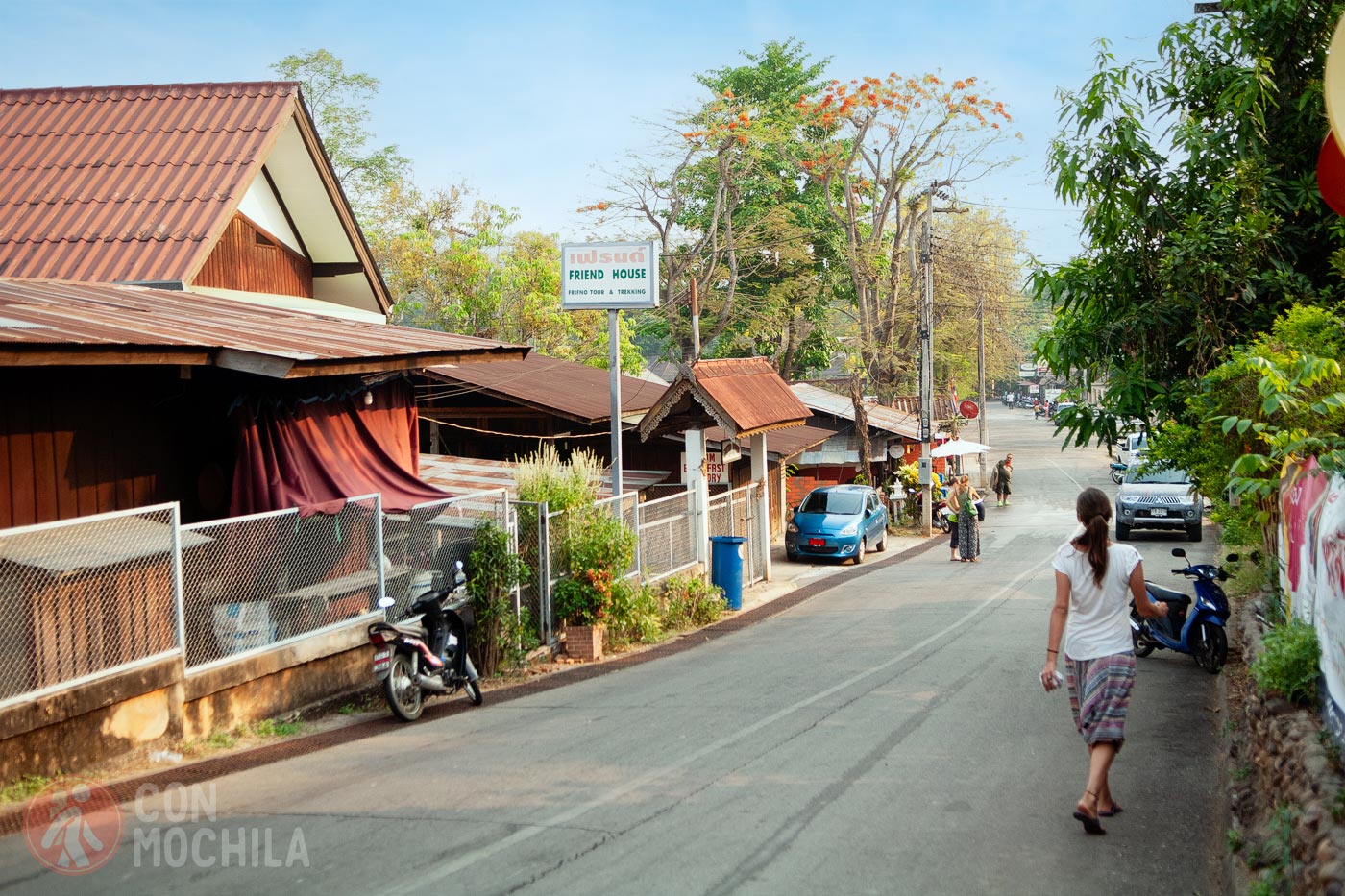
There are plenty of local markets to explore, as well as a beautiful central lake and scenic surroundings. Mae Hong Son makes for an ideal stopover, especially if you’re heading to Pai.
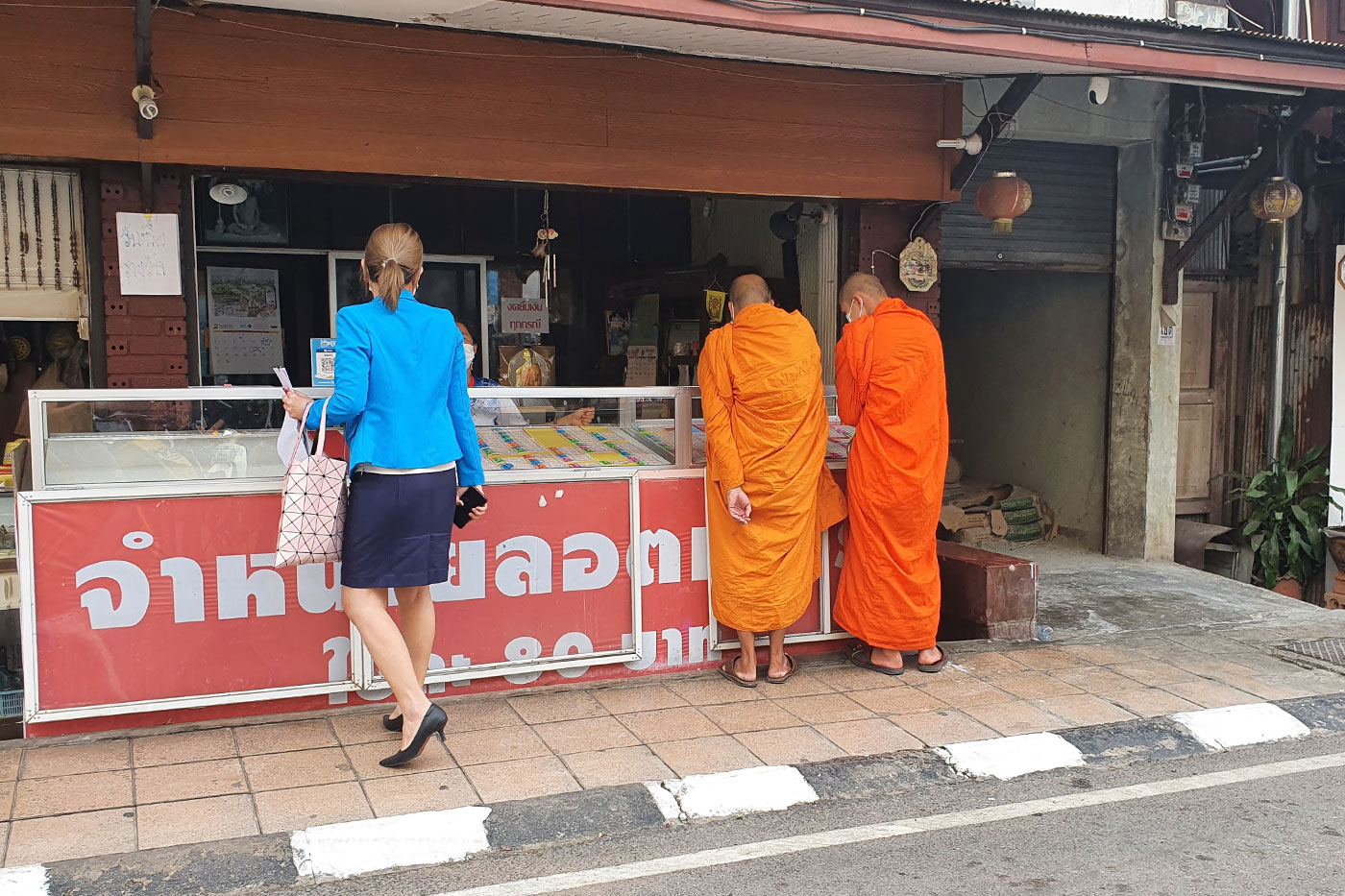
Much of the town’s social life revolves around the central lake, which is also home to a nightly market where you can grab dinner. The market opens only after sunset.
One of the highlights of visiting Mae Hong Son is exploring its temples, which stand out for two main reasons. First, they are stunningly beautiful, with a noticeable Burmese influence in their architecture that gives the feeling of being in a neighboring country.
Second, the temples are free from the crowds of mass tourism, offering a more authentic experience reminiscent of Thailand’s pre-tourism boom.
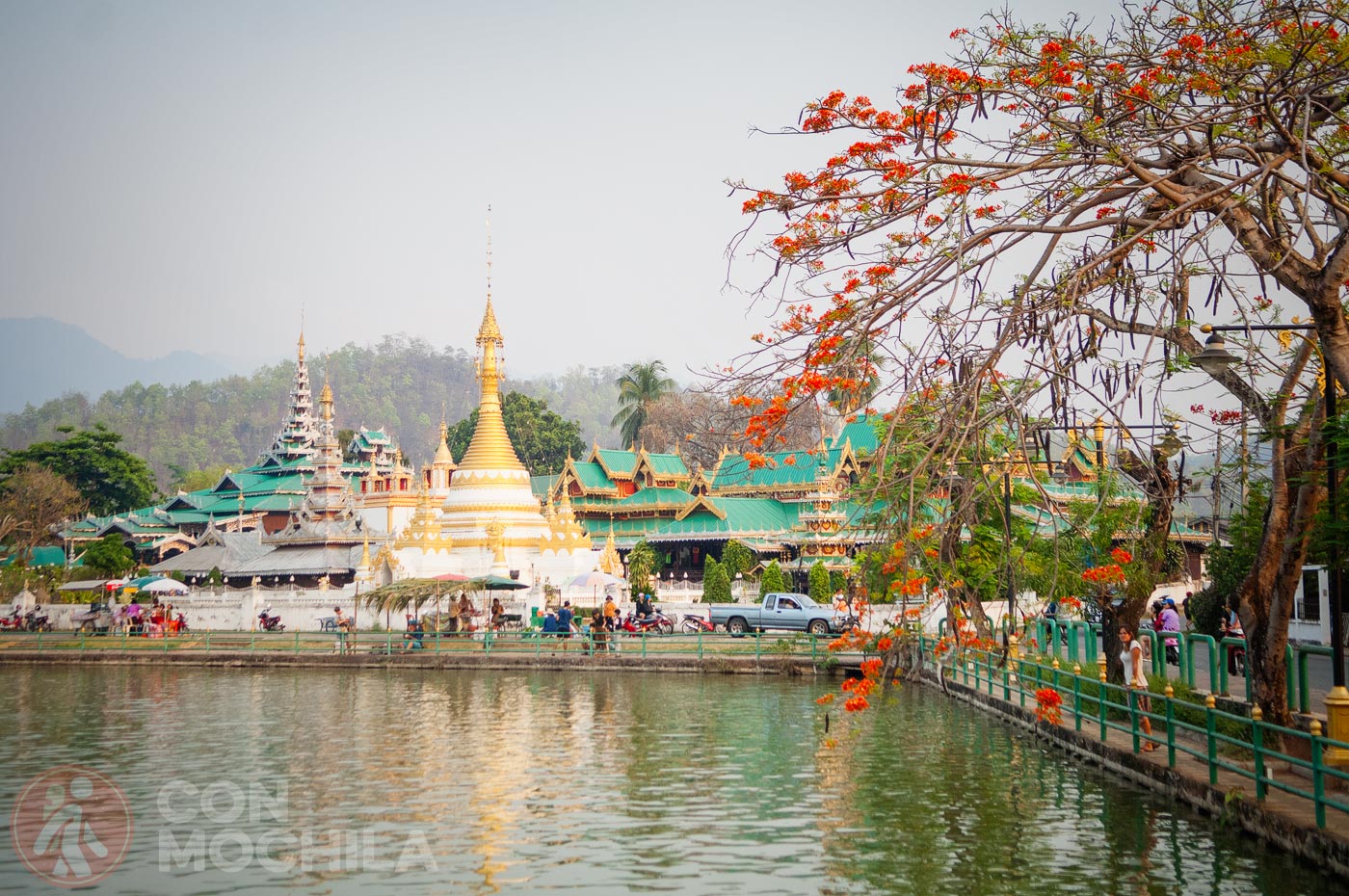
One of the most noteworthy temples is Wat Chong Kham, located by the city’s main lake. Equally impressive is Wat Phra That Doi Kong Mu, perched on a hill that offers the best panoramic views of the city, especially at sunset.
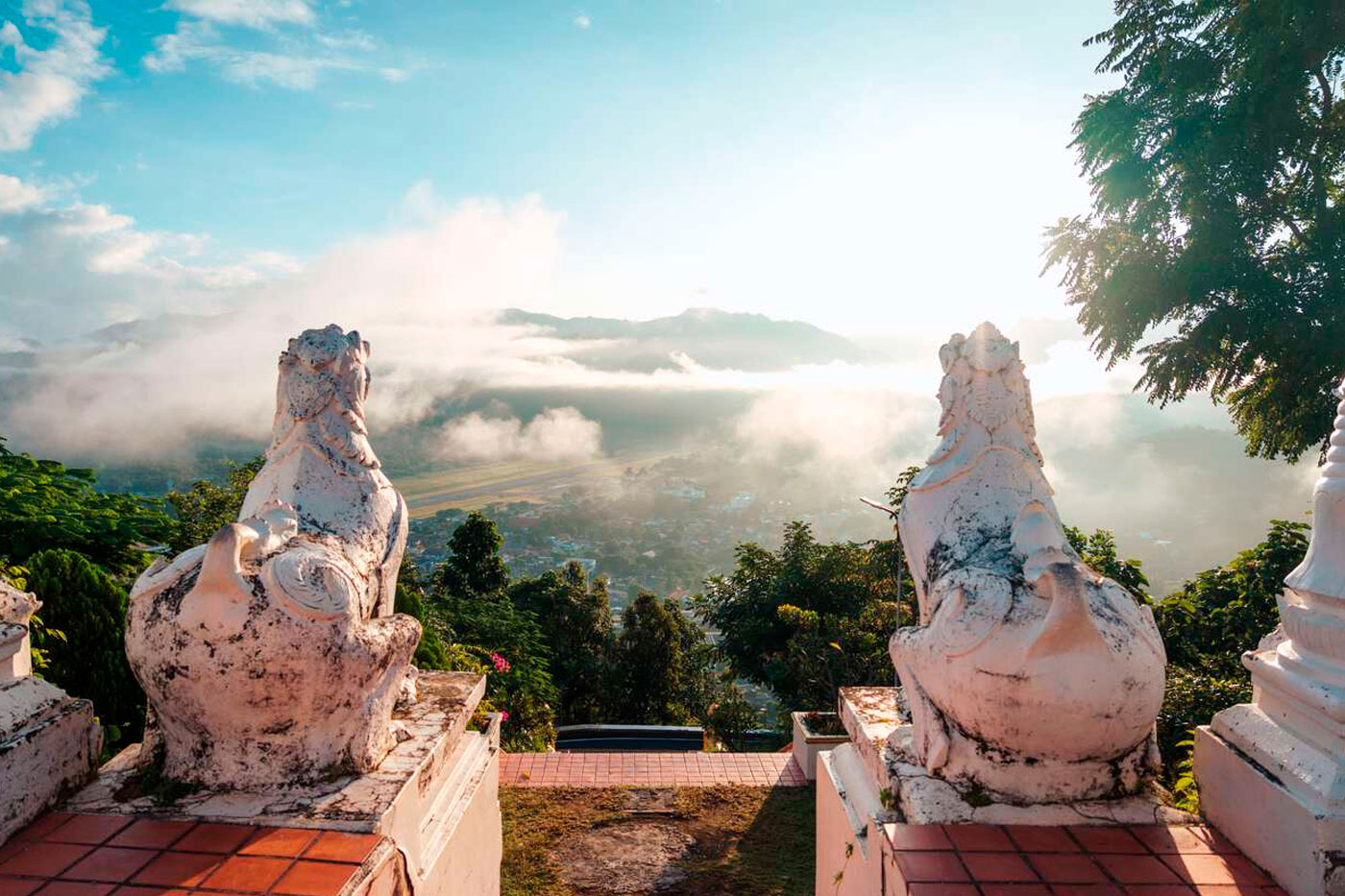
Mae Hong Son is home to some of Thailand’s most breathtaking natural landscapes, including mountains, valleys, and hot springs such as Pha Bong. There are also many scenic viewpoints throughout the region.
To fully explore the area, you’ll need a car or motorcycle. If you’re an experienced driver or rider, renting a vehicle is highly recommended.
For the more adventurous, head to the Bang Mapha region, where you can visit the famous Ban Jabo noodle house, suspended on the side of a mountain. However, be warned, the road to get there is extremely winding.
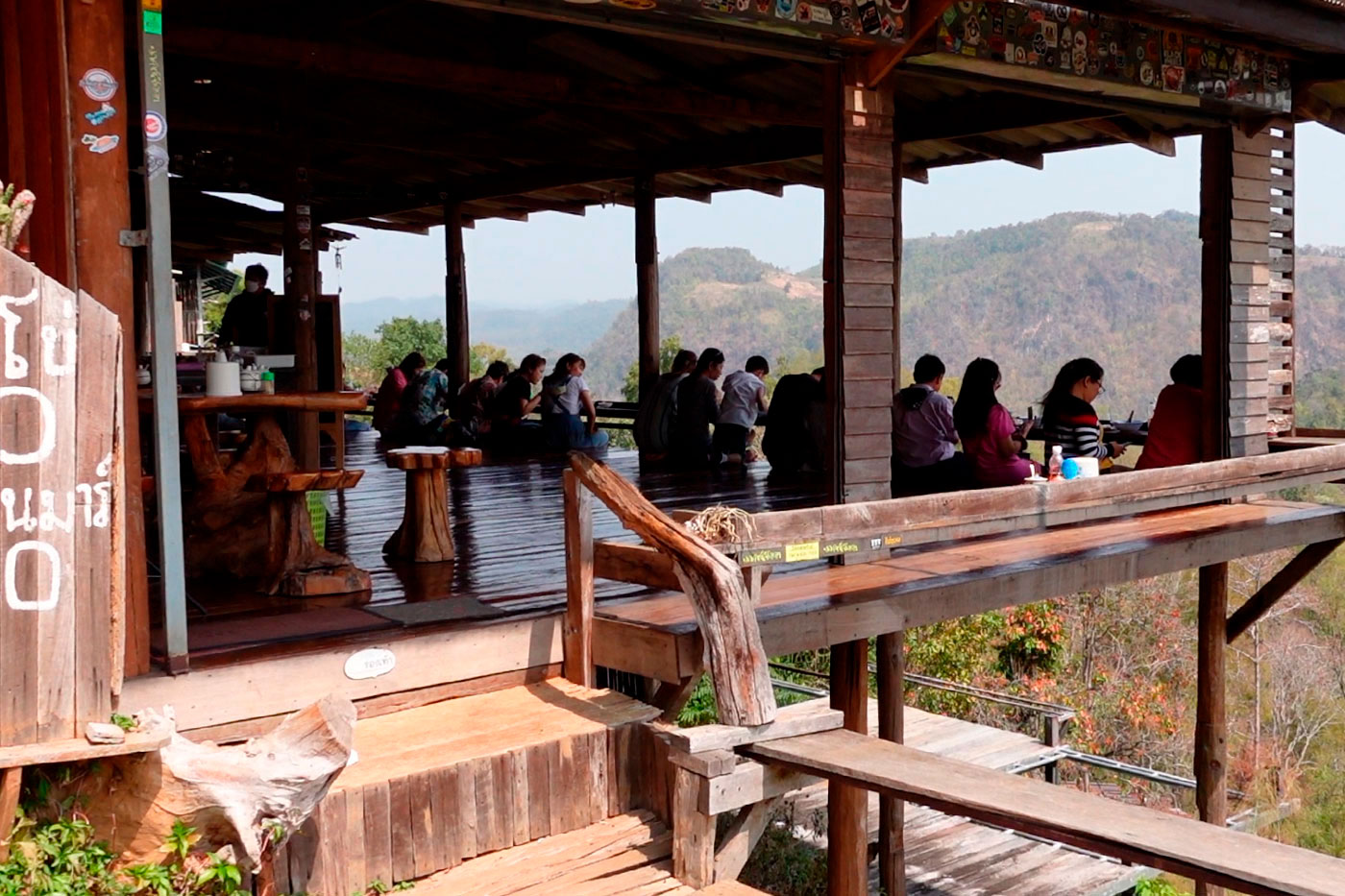
For those interested in less demanding roads, there’s an area near Mae Hong Son that’s well worth visiting, accessible even to less experienced riders. This is where you’ll find the Karen villages, home to the stateless Karen people who live along the border with Burma.
One popular stop is Pha Bong, close to the hot springs mentioned earlier. You’ll need to turn off the main road and head toward the Pai River, where you can visit several Karen villages at your own pace. Consider staying overnight in one of the mountain hotels, such as the Riverside Hotel, nestled in a picturesque village in the area.
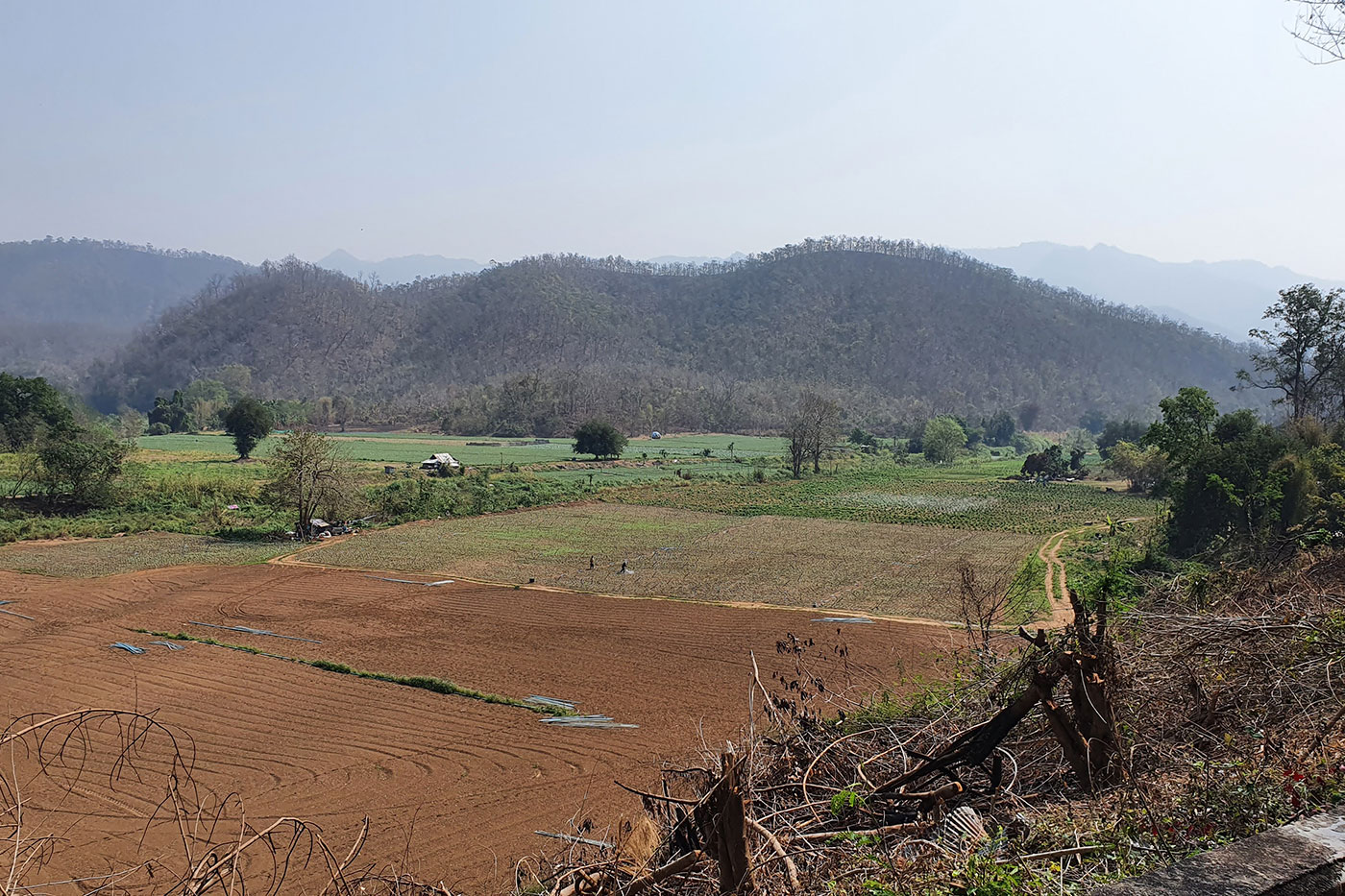
Among the villages, Huai Pu Keng is particularly beautiful. Once known for housing the so-called “giraffe women,” it now serves as a peaceful Karen settlement. You can explore the area safely, but avoid getting too close to the Burmese border, as the Thai army may block your way. Nonetheless, the region is generally safe for visitors.
Tham Lod is a remarkable site where prehistoric artifacts and remains have been discovered. You can explore this vast cave, guided by a local who will lead you through with a lamp. Inside, the cave is adorned with colorful stalagmites and stalactites, offering a magnificent sight.
One of the most iconic spots in Mae Hong Son is its central lake. Adjacent to the lake are two stunning temples: Wat Chong Klang and Wat Chong Kham.
Immerse yourself in the rich culture of this zone by visiting local villages, experiencing authentic Thai cuisine, and enjoying the picturesque rice fields and lakes in the surrounding areas.
Most visitors to Mae Hong Son rent a motorbike or car, so the location of your accommodation isn’t crucial. The city is small and easy to navigate. Ideally, staying near the lake where Wat Chong Kham temple is located offers a convenient and scenic experience.
Mae Hong Son is an incredibly affordable city, and that extends to its food. Don’t hesitate to try any local restaurant. Northern Thai cuisine is the most common, but you’ll also find dishes influenced by Burmese and northeastern Thai flavors.
A popular option is to head to the night market, known as Walking Street, where you’ll find a variety of food from all over Thailand at reasonable prices in an open-air setting.
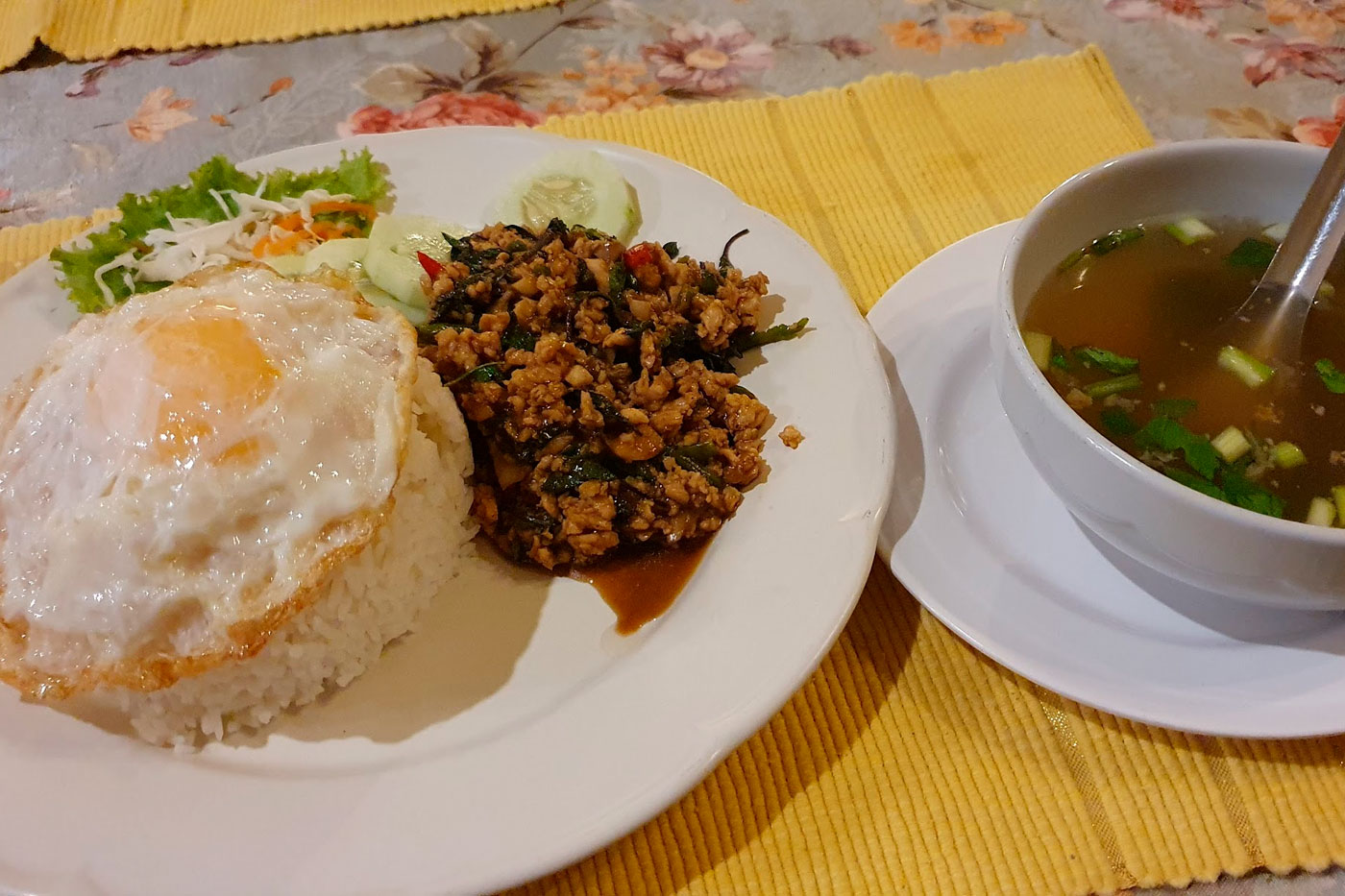
The food and ambiance reflect the northern region, definitely a must-visit experience.
Click on the image and it will take you to a new Google Maps window with all the points of interest to travel around Mae Hong Son.